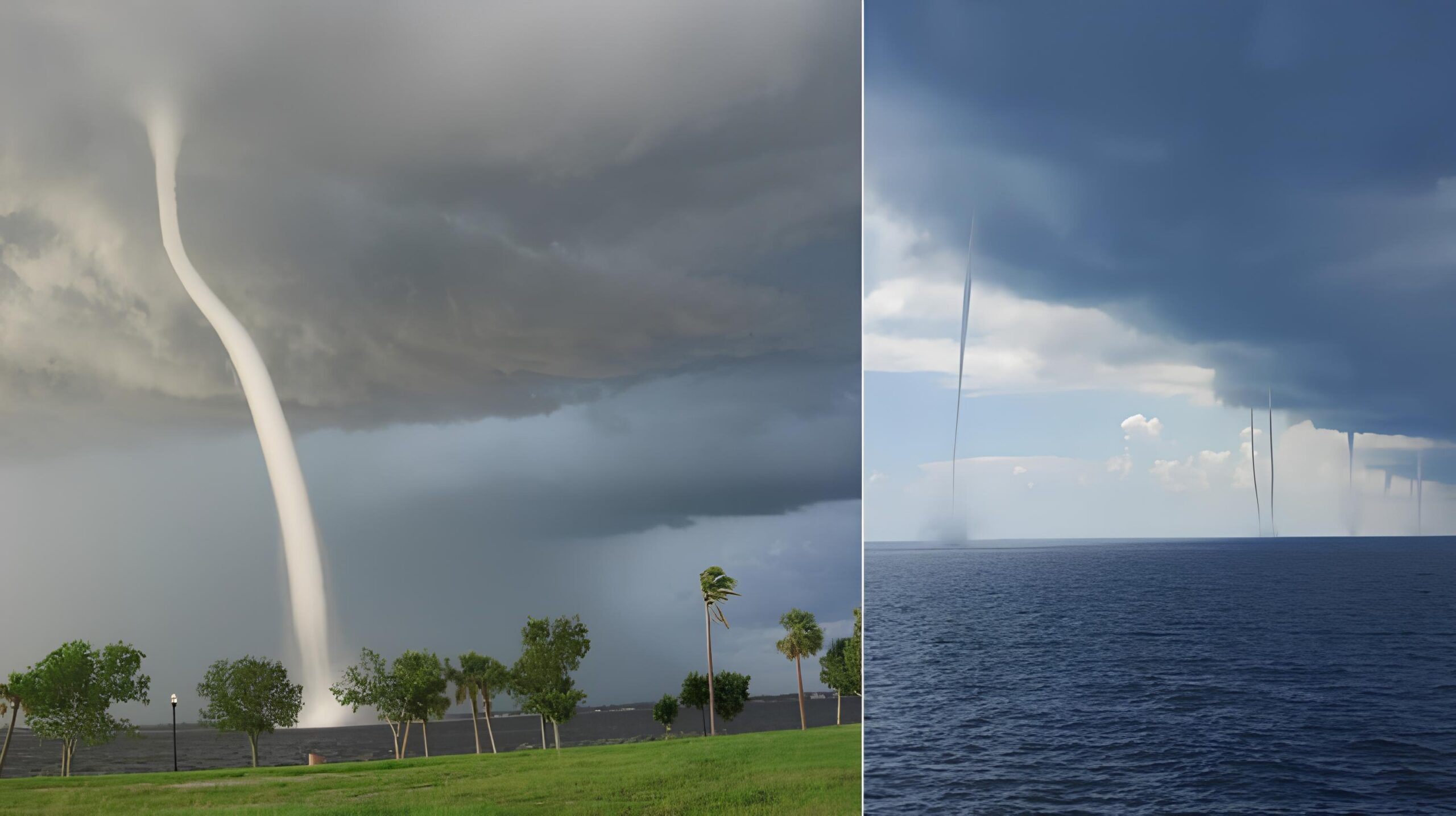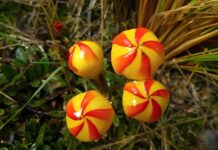Waterspouts are an awe-inspiring meteorological phenomena that never fails to enchant people who see them. Tornadoes can originate over water and may occur in both saltwater and freshwater habitats. But what is it about these swirling wonders that captivates us? Let us investigate more.
Waterspouts are caused by complicated atmospheric circumstances. They generally occur where warm and chilly air masses collide, such as in the tropics or during storms. When a thunderstorm or strong rain shower passes over a body of water, it can generate circumstances favourable to the creation of waterspouts.

Waterspouts are classified into two types: tornadic and fair-weather. Tornado waterspouts are the most intense of the two and are connected with thunderstorms with wind speeds of 100 miles per hour or higher. Fair-weather waterspouts, on the other hand, are significantly weaker and usually originate in the afternoon.
Waterspouts are classified into two types: tornadic and fair-weather. Tornado waterspouts are the most intense of the two and are connected with thunderstorms with wind speeds of 100 miles per hour or higher. Fair-weather waterspouts, on the other hand, are more weaker and appear more frequently on clear, calm days. They are often more smaller and live for far shorter periods of time than tornadic waterspouts.

A waterspout, contrary to common assumption, is not filled with water from the ocean or lake from whence it appears. Instead, the water within it is formed by condensation within the cloud. Waterspouts are therefore a unique natural occurrence to see.
Waterspouts may form almost anywhere along the world’s coastlines, with no particular locality being more prone to their occurrence. However, waterspouts occur more frequently in some areas than others. Waterspouts have been seen most frequently in the Florida Keys, Cienfuegos Bay in Cuba, and the Great Lakes.

A winter waterspout, also known as an icespout, ice devil, or snowspout, can occur beneath the base of a snow squall on occasion. This sort of waterspout is unusual and distinct from the more frequent warm-season waterspout. Two crucial criteria must be satisfied for a snowspout to form. To begin, the body of water underneath it must be warm enough to produce fog, which appears as steam in cold temperatures. Second, winds directed along the axis of long lakes promote wind convergence and are likely to play a role in their formation.
Waterspouts may be both intriguing and perilous to observe. Tornadoes, in particular, may inflict extensive damage to boats, houses, and other objects. They can also be dangerous to swimmers and other people who are in or near water. As a result, before viewing these mesmerising whirling beauties, it is always a good idea to keep informed and aware of the local meteorological conditions.
Finally, waterspouts are an amazing natural phenomena that arise as a result of complicated atmospheric circumstances. They may be both beautiful and deadly, so always proceed with caution when seeing them. Nonetheless, the mesmerising beauty of waterspouts should not be overlooked, and they serve as a reminder of nature’s incredible power.






